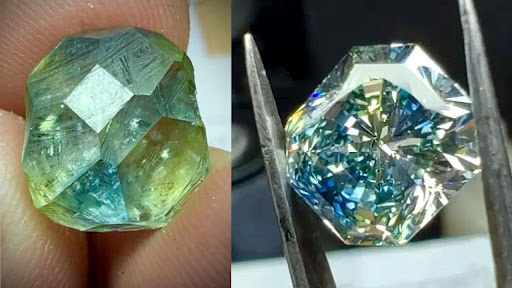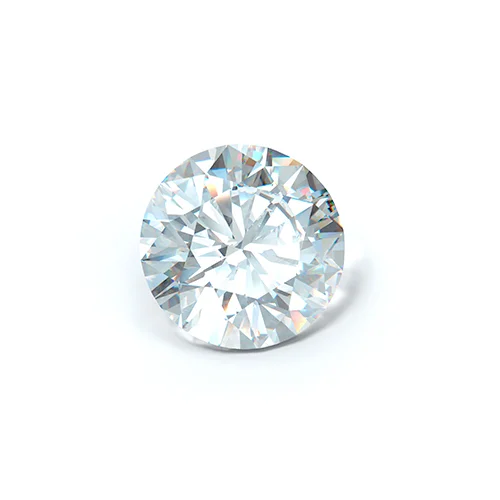
The world of gemstones continues to evolve with advancements in technology and innovation. One such breakthrough is the creation of bicolor lab-grown diamonds, which have captured the attention of both industry experts and jewelry enthusiasts. In this article, we explore the exciting development of bicolor lab-grown diamonds and delve into the grading process conducted by the International Gemological Institute (IGI). From their unique characteristics to the grading standards, we unravel the allure of these captivating gems and their potential impact on the jewelry market.
Unveiling the Fascination of Bicolor Lab-Grown Diamonds
Bicolor lab-grown diamonds offer a mesmerizing play of color and design that distinguishes them from their traditional counterparts. In this section, we dive into the captivating features that make these diamonds so alluring. We explore the scientific processes behind their creation, highlighting how their distinctive color zoning is achieved. Additionally, we discuss the range of color combinations and patterns that can be found in bicolor lab-grown diamonds, creating endless possibilities for innovative jewelry designs.
IGI’s Pioneering Role in Grading Bicolor Lab-Grown Diamonds
The International Gemological Institute (IGI) plays a crucial role in assessing and certifying the quality of gemstones, including bicolor lab-grown diamonds. This section focuses on IGI’s pioneering efforts in developing grading standards specifically tailored to bicolor lab-grown diamonds. We delve into the criteria used to evaluate these unique gems, including color consistency, transition zones, and overall visual appeal. By understanding IGI’s grading process, consumers and industry professionals can make informed decisions when purchasing bicolor lab-grown diamonds.
Evaluating the Color Consistency of Bicolor Lab-Grown Diamonds
Color consistency is a key factor in the grading of bicolor lab-grown diamonds. In this section, we explore how IGI assesses the distribution and intensity of color within these gems. We delve into the various color combinations, such as pink and yellow, blue and green, or purple and orange, and discuss the importance of balanced color zoning. By ensuring a harmonious transition between different color zones, IGI provides valuable insights into the overall beauty and quality of bicolor lab-grown diamonds.
Analyzing the Transition Zones in Bicolor Lab-Grown Diamonds
Transition zones, where two distinct colors meet, are an essential aspect of bicolor lab-grown diamonds. In this section, we examine how IGI evaluates the transitions between different color zones within these diamonds. We explore the criteria used to assess the sharpness, clarity, and visual impact of these transition zones. Understanding the nuances of these transitions allows for a deeper appreciation of the craftsmanship and artistry involved in creating bicolor lab-grown diamonds.
The Appeal of Bicolor Lab-Grown Diamonds in Jewelry Design
Bicolor lab-grown diamonds offer endless creative possibilities for jewelry designers. In this section, we explore the unique aesthetic appeal of these gems and their potential to elevate jewelry designs. We discuss how the striking contrast of colors can be incorporated into various jewelry settings, from classic solitaire rings to contemporary statement pieces. Additionally, we highlight the versatility of bicolor lab-grown diamonds, as they can be used as center stones or accentuate other precious gemstones.
The Growing Popularity and Market Potential of Bicolor Lab-Grown Diamonds
Bicolor lab-grown diamonds are gaining traction in the jewelry market, attracting both consumers and industry professionals. This section focuses on the increasing popularity and market potential of these gems. We discuss the advantages of bicolor lab-grown diamonds, such as their affordability compared to natural diamonds and their eco-friendly credentials. Additionally, we delve into the consumer demand for unique and distinctive gemstones, which has contributed to the rise in popularity of bicolor lab-grown diamonds. As more consumers seek personalized and unconventional jewelry pieces, these diamonds offer a fresh and modern alternative to traditional gemstones. We also explore the market potential of bicolor lab-grown diamonds, including their appeal to younger generations who value sustainability and ethical sourcing in their purchasing decisions.
Embracing the Future of Bicolor Lab-Grown Diamonds
Bicolor lab-grown diamonds represent a significant advancement in the world of gemstones, pushing the boundaries of creativity and design. In this final section, we reflect on the future prospects of these gems and their role in shaping the jewelry industry. We discuss the potential for further innovations and improvements in the production of bicolor lab-grown diamonds, including advancements in color zoning techniques and the expansion of available color combinations. We also examine the evolving consumer preferences and market trends, anticipating how bicolor lab-grown diamonds will continue to capture the imagination of jewelry enthusiasts worldwide.
Conclusion:
The emergence of bicolor lab-grown diamonds has revolutionized the gemstone industry, offering a captivating fusion of colors and design. The grading standards developed by the International Gemological Institute (IGI) ensure the consistent evaluation of these remarkable gems, providing consumers with confidence in their quality and value. The growing popularity of bicolor lab-grown diamonds and their potential market impact highlight their significance in the realm of jewelry design.
As we embrace the future, the allure of bicolor lab-grown diamonds continues to captivate both jewelry connoisseurs and industry professionals alike. These gems represent an exciting avenue for creativity, pushing the boundaries of traditional design and offering endless possibilities for unique and personalized jewelry pieces. With their distinct color combinations and visually striking transitions, bicolor lab-grown diamonds are poised to become a sought-after choice for those seeking extraordinary gemstones.
As technology and innovation progress, we can anticipate further advancements in the production and availability of bicolor lab-grown diamonds. With their eco-friendly credentials and growing consumer demand for sustainable alternatives, these gems are well-positioned to shape the future of the jewelry industry. Whether as a center stone or as accent stones in jewelry designs, bicolor lab-grown diamonds bring a touch of individuality and artistic expression to the world of fine jewelry.

